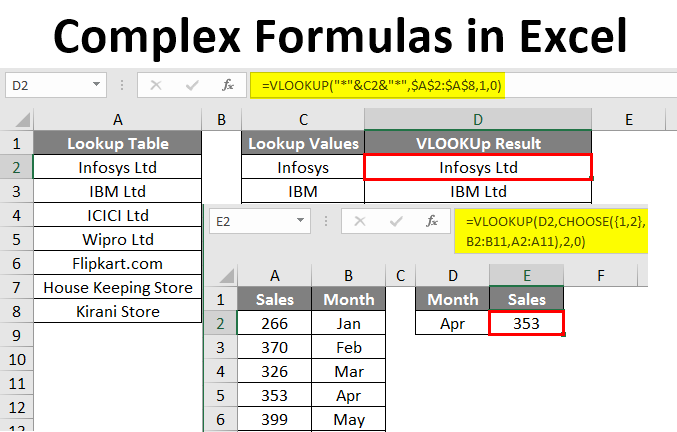Unraveling Complexity: A Comprehensive Exploration of Complex Formulas in Excel

In the realm of spreadsheet software, Microsoft Excel stands as a powerhouse, offering users a vast array of tools and features to analyze data, perform calculations, and automate tasks. At the heart of Excel’s functionality lies its ability to handle complex formulas, empowering users to tackle sophisticated calculations and solve intricate problems with precision and efficiency. In this extensive guide, we’ll embark on a deep dive into complex formulas in Excel, unraveling their intricacies and unlocking the full potential of this indispensable tool.
Understanding Complexity in Excel Formulas:
Complex formulas in Excel extend beyond simple arithmetic operations, incorporating a multitude of functions, logical expressions, and nested calculations. These formulas allow users to manipulate data, perform advanced analysis, and derive insights from large datasets. Here are some key aspects of complexity in Excel formulas:
- Nested Functions: Complex formulas often involve nesting multiple functions within one another to perform sequential calculations or apply conditional logic.
- Array Formulas: Excel’s array formulas enable users to perform calculations on arrays of data, resulting in dynamic and flexible calculations that can handle multiple values at once.
- Conditional Logic: Complex formulas may incorporate logical functions such as IF, AND, OR, and nested IF statements to perform calculations based on specified conditions.
- Lookup and Reference Functions: Functions like VLOOKUP, HLOOKUP, INDEX, and MATCH allow users to retrieve data from tables or arrays based on specified criteria.
Examples of Complex Formulas:
Complex formulas in Excel can be applied to a wide range of scenarios, from financial analysis and statistical modeling to data validation and automation. Here are some examples of complex formulas and their applications:
- Financial Analysis: Calculating loan payments using the PMT function combined with conditional logic to handle variable interest rates and payment frequencies.
- Statistical Modeling: Performing regression analysis using the LINEST function to fit a line to a set of data points and analyze trends and correlations.
- Data Validation: Using nested IF statements and logical functions to create custom validation rules for data entry, ensuring data integrity and accuracy.
- Automation: Developing complex formulas to automate repetitive tasks such as data cleansing, data transformation, and report generation.
Best Practices for Working with Complex Formulas:
To effectively work with complex formulas in Excel, consider the following best practices:
- Break Down Formulas: Break down complex formulas into smaller, manageable parts for easier troubleshooting and understanding.
- Use Descriptive Names: Name ranges, tables, and named formulas descriptively to improve clarity and readability of complex formulas.
- Document Your Formulas: Use comments or adjacent cells to document the purpose and logic behind complex formulas, making them easier to maintain and update.
- Test and Validate: Test complex formulas with different datasets and scenarios to ensure accuracy and reliability before deploying them in production environments.
Conclusion:
Complex formulas in Excel empower users to tackle sophisticated calculations, perform advanced analysis, and automate tasks with precision and efficiency. By mastering the intricacies of nested functions, array formulas, conditional logic, and lookup functions, users can unlock the full potential of Excel as a powerful analytical tool. Whether conducting financial analysis, statistical modeling, data validation, or automation, complex formulas enable users to derive insights and make informed decisions with confidence. So, the next time you encounter a challenging problem or analytical task, remember to leverage the power of complex formulas in Excel to unravel complexity and achieve your goals with ease. With practice, perseverance, and a deep understanding of Excel’s capabilities, you can harness the full power of complex formulas to excel in your professional or academic endeavors.




